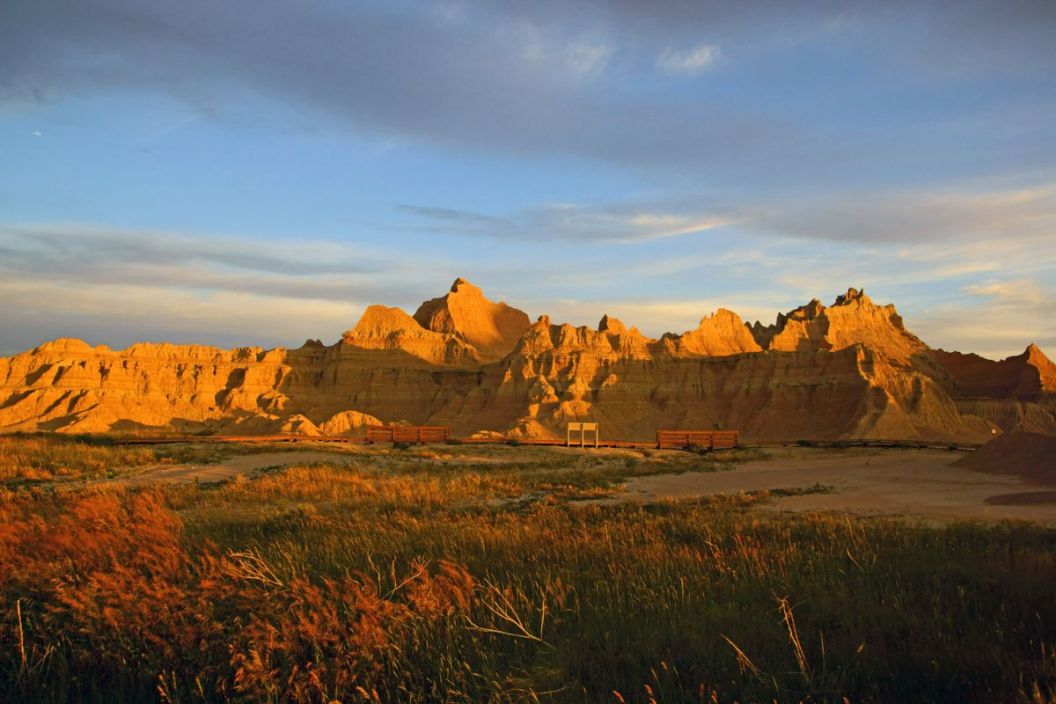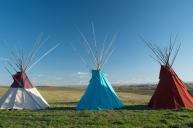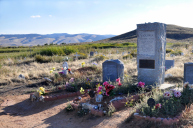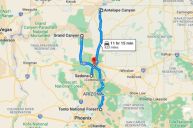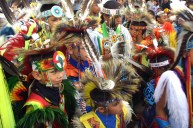My name is Wynne, and I'm a member of the Ihanktonwan Sioux Nation. I'm an avid traveler and have lived nomadically all around the country, but my roots are in my homelands of South Dakota. When you think of the Black Hills, your mind may lead you to the Mount Rushmore National Memorial and the Sturgis Motorcycle Rally. But this sacred land is so much more than that. These are the ancestral lands of the Oceti Sakowin (The Great Sioux Nation). The Oceti Sakowin is composed of the seven bands of the Lakota, Dakota, and Nakota people. The Black Hills are the birthplace of our Nation, where we emerged from the earth's womb-our creation began at what is now Wind Cave National Park, north of Hot Springs, South Dakota.
Our story begins at a time when the plants and animals were still being brought into existence, but there were no people or bison living on the earth. People at that time lived underground in the Tunkan Tipi — the spirit lodge — and were waiting as the earth was prepared for them to live upon it. To get to the spirit lodge, one must take a passageway through what the ancestors referred to as Oniya Osoka, where the earth "breathes inside." This place is known today as Wind Cave, referred to in modern Lakota as Maka Oniye or "breathing earth." Somewhere, hidden deep inside this passageway, is a portal to the spirit lodge and the spirit world..from this our nation was birthed.
Geology and Geography of the Black Hills

Eifel Kreutz via Getty Images
The Black Hills region is located in western South Dakota, nestled two hours east of Devil's Tower in Wyoming, on the western side of Rapid City, South Dakota. This geological and sacred wonder is the oldest mountain range in North America, dating to 1.8 billion years old. Our oral language dates us back to this region for millennia: We have always been here; our stories are interwoven with the land.
Our creation began underground, in a cave system that since 1881 has only been explored for about 300 miles, with the projection for potential unexplored areas exceeding thousands of miles, making this region one of the most expansive cave systems in North America. Stepping out of the underground, the Hills rise thousands of feet above the plains, reaching their pinnacle of 7,242 feet at Black Elk Peak (formally known as Harney Peak), the highest point in North America east of the Rocky Mountains. It is with much gratitude that this sacred site had its name changed to one that was a reflection of the land and people. The outdated namesake of Harney Peak stems from General William S. Harney who is responsible for the massacre of a Lakota village in 1855. It is fundamental in our nation to acknowledge our past and present in order to honor and respect the history of indigenous nations. A simple start is to name places with regard to the truthful origins and inhabitants.
Broken Treaties Broken Promises- The Black Hills Are Not For Sale
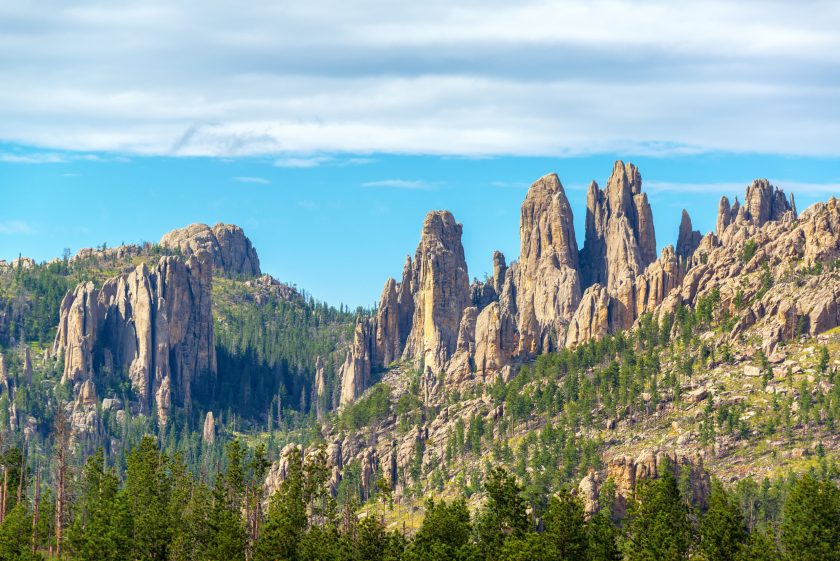
DC_Columbia via Getty Images
I wish to veer your focus from the Black Hills being all about Mount Rushmore, which to us native people is actually the desecration of a sacred mountain. So much of our past history and current struggle is left out of history books, and the narrative of "American History" excludes both our current life experiences and culturally historic sites. So instead, I encourage you to visit the Crazy Horse Memorial, built in honor of Oglala Lakota Chief Crazy Horse who fought to protect his land and people. Here you will find the Indian Museum of North America and the Native American Education and Cultural Center, offering visitors many unique learning opportunities and the chance to experience Indigenous artwork from artists all around the country.
In 1868, the US government signed a formal treaty with the tribes, an agreement from one nation to another, granting us ownership of the Black Hills "for as long the grass grows and the river flows". This treaty was broken in 1870, when the government took our land from us to open the Hills for gold mining by settlers coming to the area. This is not the first time the government broke a treaty with tribes. In fact, they've never upheld even one. We fought then and have been fighting since to protect and preserve our land.
RELATED: Public Lands with Deep-Rooted Connections to Indigenous Peoples
Experience Native Culture
To authentically experience the Black Hills, one must pay homage to the first nations that called this place home. There are many ways to do this, from visiting sacred historic sites to museums honoring our past and current culture, and memorials built to honor us and our history. I recommend doing some local research if you happen to be in the area, you may get lucky and find a pow-wow. Our native dance celebrations are an amazing opportunity to experience the beauty of our culture and these events are open to the public. Relax and enjoy the beautiful spectacle that is our wacipi.
Should you choose to explore one of our cultural sites, we ask that you do so with deference to the importance they hold to us. Let the experience encompass you but please respect our sites as you would a traditional church or burial ground.
The Journey Learning Museum Center
Crazy Horse Memorial
Red Cloud Heritage Center
Wounded Knee Site
Bear Butte State Park
Black Elk Peak
Badlands National Park
Road Trip Tip
Take a scenic drive through the ponderosa and spruce forests while gazing upon granite spires and pinnacles on the connecting highways that offer both spectacular views and many different activities for you and the entire family.
Needles Highway
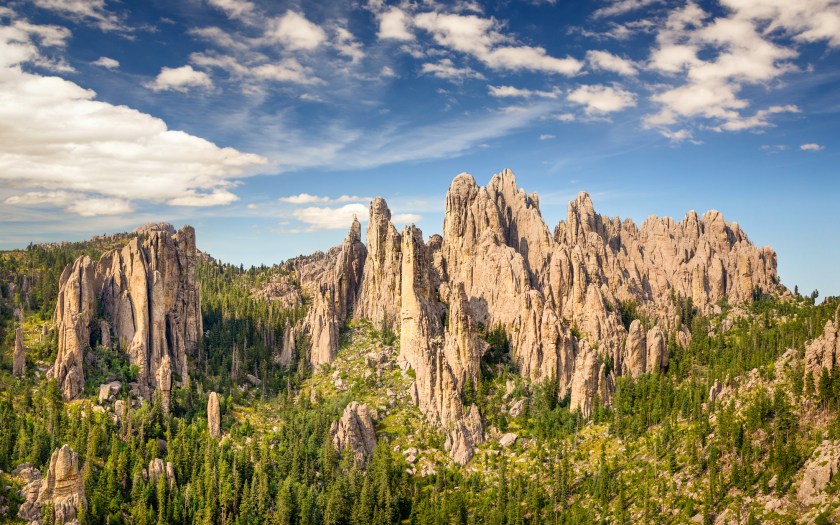
keeweeboy via Getty Images
Needles Highway is a 14-mile stretch of highway that undoubtedly features the most phenomenal views in South Dakota. This drive brings you to our sacred Black Elk Peak, and beautiful Sylvan Lake. Check it out!
Custer State Park Wildlife Loop
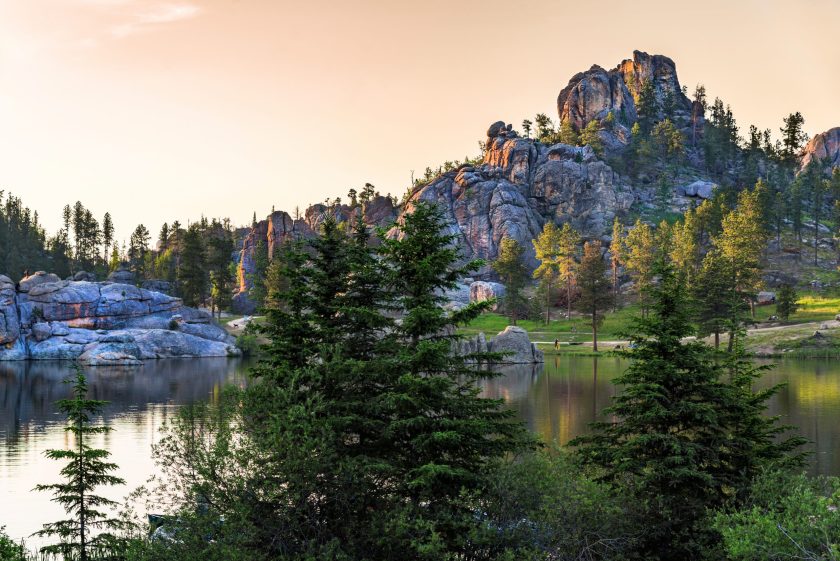
BenjaminSullivan via Getty Images
An 18-mile Wildlife Loop offers opportunities to see bison, pronghorn, prairie dogs, burros, elk, and deer.
Spearfish Canyon Scenic Byways
This 20-mile stretch snakes through an ancient, winding narrow canyon. The drive also offers opportunities for hiking, rock climbing, biking, and epic views of waterfalls.
US Highway 385
The longest road in the Black Hills passes through several old western towns, stopping in Hill City, Custer, Deadwood, and Lead. Here you can find breweries and wineries such as Miner Brewing and Prairie Berry Winery.
Iron Mountain Road
Iron Mountain Road, part of the Peter Norbeck National Scenic Byway, takes you past Crazy Horse Memorial, south to Jewel Cave National Monument and on to Hot Springs, South Dakota- where you will find ancient springs open to the public, and Mammoth site where you can see ice age fossils first hand.
Stay up to date on Indigenous triumphs & current politics with NDN Collective
Based in Rapid City, South Dakota, NDN Collective is an Indigenous-led organization dedicated to building Indigenous power. Through organizing, activism, philanthropy, grant-making, capacity-building, and narrative change, they are creating sustainable solutions on Indigenous terms. Currently NDN Collective is leading a campaign to boycott racist businesses in Rapid City, find more information about this here.
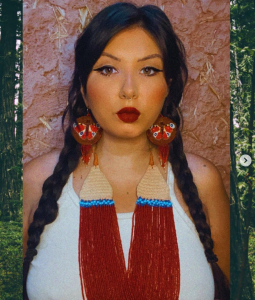
Wynn?" Weddell is a proud member of the Ihanktonwan (Yankton Sioux) nation who spent many years living in the Pacific Northwest. She is on the team at Diversify Vanlife, a platform dedicated to amplifying BIPOC voices in outdoor spaces and advocating for environmental consciousness within the nomadic community. Instagram: @rainbowmountain_
Have you ever been to the Black Hills of South Dakota? Share your experience with us on Wide Open Roads Facebook!
READ MORE: A Guide to Exploring South Dakota's Beautiful Badlands National Park
